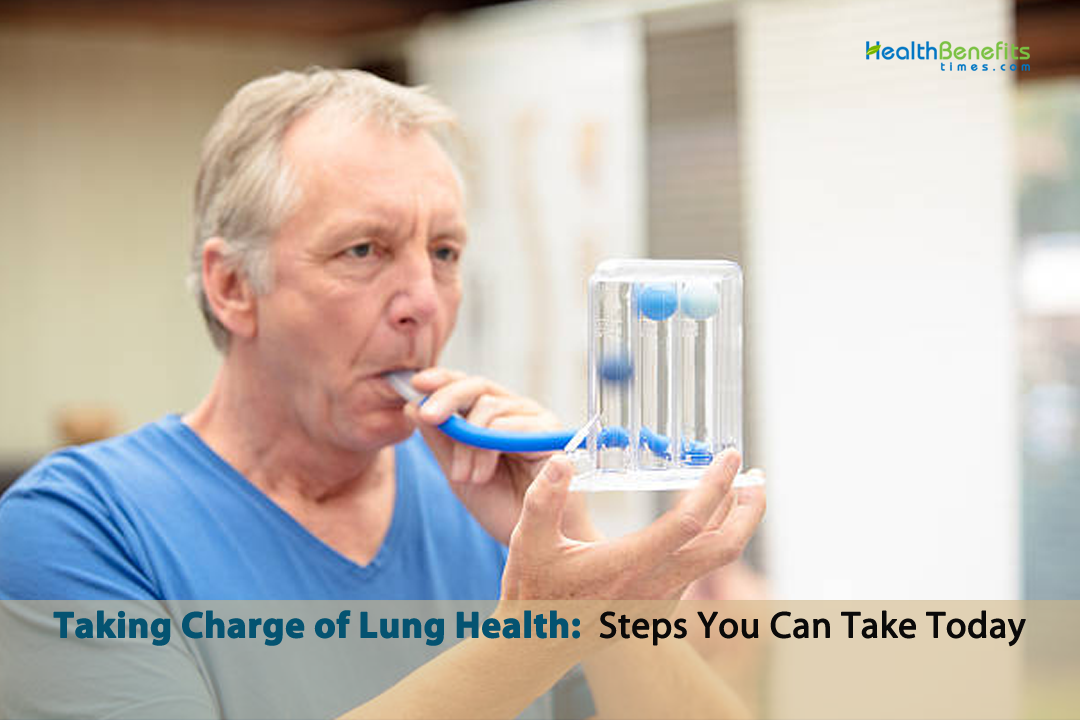
Practicing yoga, qigong, or meditation can help improve breathing and lung function. These activities can help individuals focus on their breath, take longer and deeper breaths, and increase air movement through the respiratory system. Eating a variety of colored fruits and vegetables, which are rich in antioxidants and vitamin C, can also improve lung health and prevent wheezing and coughing. Deep breathing techniques can help lower stress, blood pressure, and improve cognitive function, among other benefits.
To reduce the health risks of third-hand smoke, it is important to keep indoor surfaces clean and avoid smoking indoors. Children are especially vulnerable to absorbing dangerous chemicals from third-hand smoke through their skin. By implementing these practices, individuals can improve their overall health and well-being.
Learn qigong, meditation, or yoga.
Yoga, qigong, and meditation are all activities that can help you learn how to breathe better, which is good for your lungs. These therapies can help you pay more attention to your breath, take longer breaths in and out, and breathe deeply into your abdomen. You can increase the movement of air through your respiratory system by following your out-breath up through your chest, shoulders, and head. If you do these things every day, your lung function and general respiratory health may get better. You may take a class or look for information online to learn more about these helpful habits. With frequent practice and dedication, you can learn a better way to breathe that will help your health and well-being as a whole.
Breathe easier with color
If you wheeze and cough, eating a variety of colored fruits and veggies may help. Norwegian researchers say that a diet full of antioxidants and vitamin C, which can be found in red, green, blue, yellow, and purple fruits and vegetables, can help the lungs work better and make it easier to breathe. These meals are full of nutrients that can help reduce inflammation and improve lung health in general. Think about adding colored fruits and veggies to your meals and snacks, and try to eat a wide range of various kinds every day. With a healthy, colorful diet, you can prevent wheezing and coughing and help your lungs stay healthy.
Breathe deeply
Deep, mindful breathing is a powerful way to improve both your physical and emotional health. When done frequently, deep breathing can help lower stress and sadness, lower blood pressure, alleviate asthma symptoms, improve cognitive function, and give you more energy. Even while a normal breath may only take in about 0.018ft3 (500cm3) of air, you may considerably boost this amount by taking deep breaths and using both your lungs and abdomen to get the most air in. By taking slow, deep breaths, you can increase the amount of oxygen that flows through your body. This is good for your health and well-being as a whole. Think about adding deep breathing techniques like yoga or meditation to your daily routine, or just take a few minutes each day to focus on your breath. With practice, you can learn a better way to breathe that is good for both your physical and emotional health.
Keep everything tidy
Keeping your indoor surfaces clean is not only vital for keeping a clean home, but it can also assist lessen the health dangers of being around third-hand smoke. Research done in the United States has revealed that nicotine and other carcinogens can stay on interior surfaces for a long time, putting anybody who touches them at danger. Children are especially likely to eat or absorb these dangerous chemicals through their skin. Scientists think that this exposure to “third-hand smoke” can explain why passive smoking can cause cancer. The best thing to do is not smoke at all, or if you have to, goes outside to do it. If someone smokes within your home, you should wipe down all surfaces often to keep dangerous toxins from building up. By taking these precautions, you may safeguard your health and the health of your family from the health concerns of being around third-hand smoke.
Work out your respiratory muscles
Using a respiratory muscle trainer may help you breathe better during exercise if you feel like you can’t catch your breath. When you breathe in via a valve, this device adds resistance. This makes your breathing muscles work harder. This can be especially helpful for those whose breathing muscles are weak because of a lung disease like asthma or chronic obstructive pulmonary disease. (COPD). If you have a similar condition that makes you feel like you can’t catch your breath, you might want to ask your doctor if you can get a respiratory muscle trainer with a prescription. If you use this device consistently, you might be able to enhance the way you breathe and have a better quality of life.
Inhale and unwind
You might attempt the following abdominal breathing exercise to raise your body’s oxygen intake, increase your energy level, calm down, and improve your focus:
- Lie down and prop a small book against your chest. As you breathe in and out, make sure the book rises and falls. You should give this some practice until you feel comfortable with it.
- Feel the book on your chest rise as you take a slow, deep breath through your nose.
- Push your abdomen upward when the breath hits it, allowing it to rise just over the book. Your lungs can now take in more air because to the enlargement of your diaphragm.
- After holding your breath for one second, start to slowly let out air through your nose while letting your abdominal muscles loosen up.
- If you have time, repeat the exercise as many times as necessary to feel completely relaxed while maintaining a loose mouth.
By performing this abdominal breathing exercise on a daily basis, you can enhance your breathing technique and benefit from a higher body oxygen level.

